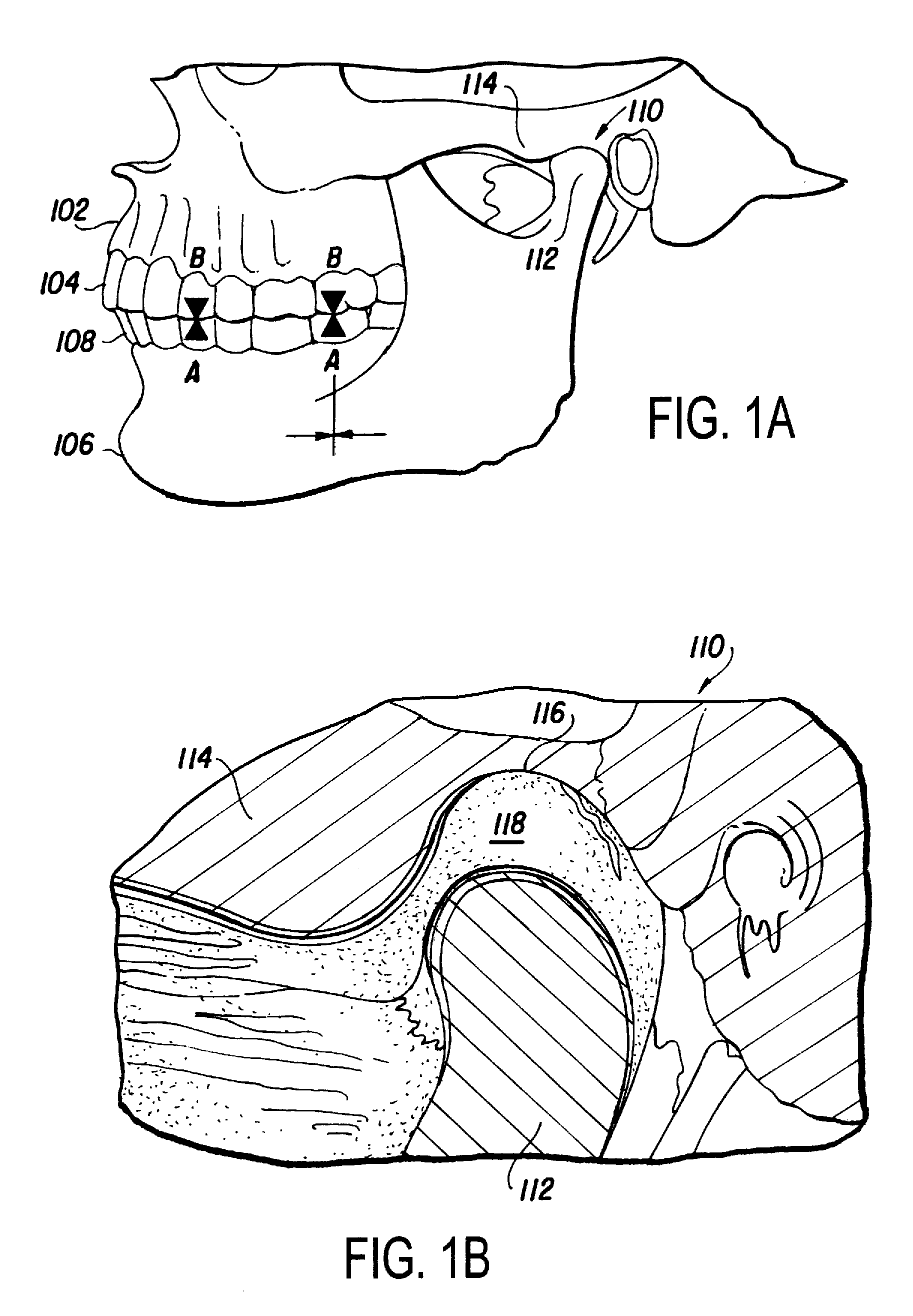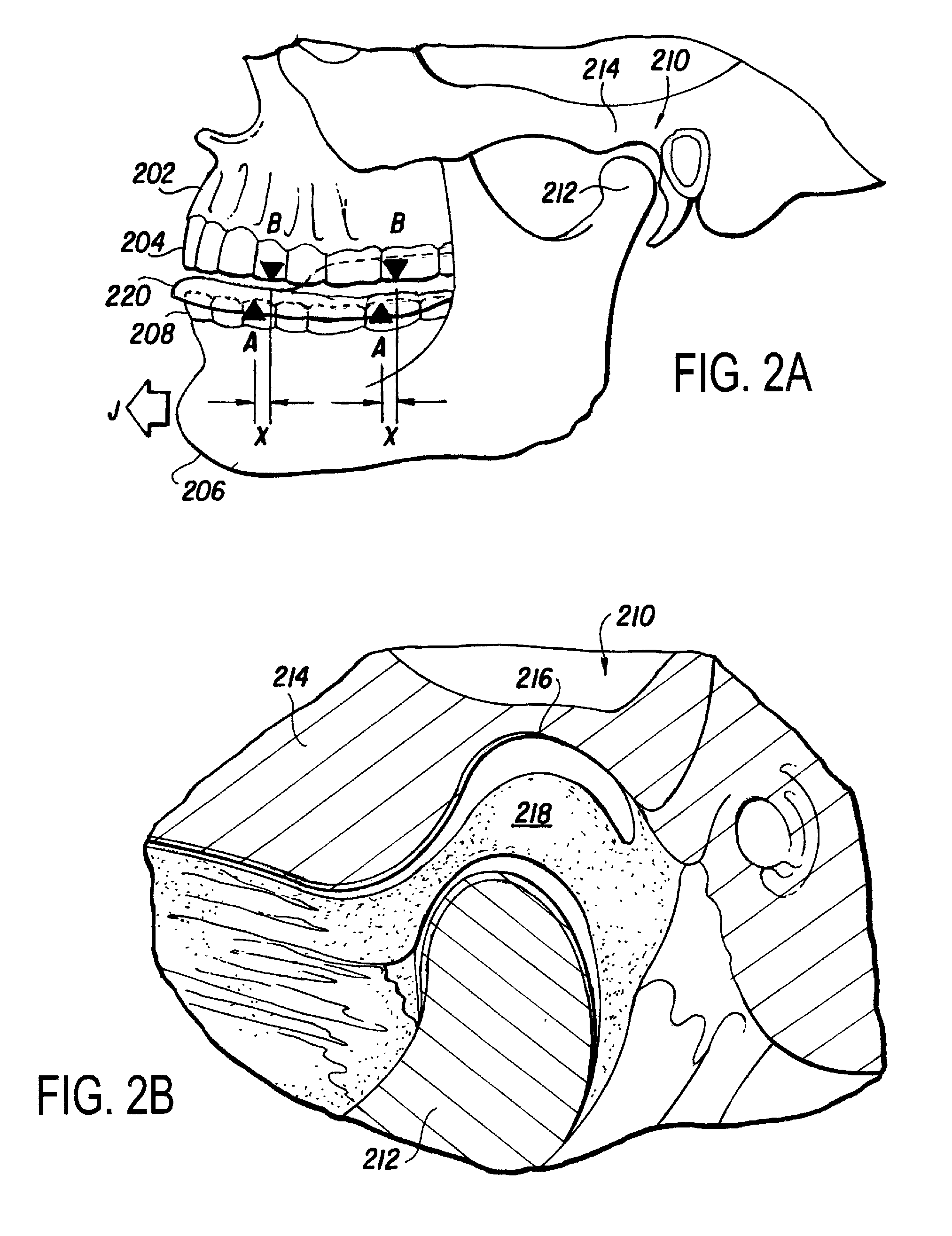Musculoskeletal repositioning device
a repositioning device and muscle technology, applied in the direction of teeth capping, snoring prevention, impression caps, etc., can solve the problems of muscle weakness and muscle tension throughout the body, complicated and expensive manufacturing, and other problems, to achieve the effect of relieving stress on the temporomandibular joint, reducing muscular tension, and increasing muscular strength
- Summary
- Abstract
- Description
- Claims
- Application Information
AI Technical Summary
Benefits of technology
Problems solved by technology
Method used
Image
Examples
Embodiment Construction
[0023]Embodiments of the present invention are musculoskeletal repositioning devices and methods for making such devices. The devices of the present invention are worn on the teeth of the lower jaw and cause the jaw of the user to move into an active optimal position, relieving tension in the temporomandibular joint and subsequently relieving muscular tension and improving muscular strength throughout the body.
[0024]Throughout the specification and drawings, like numbers will refer to like elements with the first number of the reference element referring to the figure in which it is shown. For example, an element with reference number 114 will be referred to as reference number 214 in FIG. 2, and so on.
[0025]A side view of the human jaw is shown in FIG. 1A. The maxilla 102, or upper jaw bone, is part of the skull and supports the upper teeth 104. The mandible 106, or lower jaw bone, which supports the lower teeth 108, is freely movable and hinges to the skull at the temporomandibula...
PUM
 Login to View More
Login to View More Abstract
Description
Claims
Application Information
 Login to View More
Login to View More - R&D
- Intellectual Property
- Life Sciences
- Materials
- Tech Scout
- Unparalleled Data Quality
- Higher Quality Content
- 60% Fewer Hallucinations
Browse by: Latest US Patents, China's latest patents, Technical Efficacy Thesaurus, Application Domain, Technology Topic, Popular Technical Reports.
© 2025 PatSnap. All rights reserved.Legal|Privacy policy|Modern Slavery Act Transparency Statement|Sitemap|About US| Contact US: help@patsnap.com



